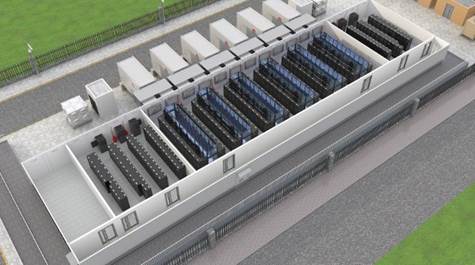With
the growing digital demands, businesses are under constant pressure to ensure
their infrastructure can keep pace. Internet Data Centers (IDCs) serve as the
backbone for cloud computing, data analytics, and real-time applications, but
the most advanced setup can quickly become outdated or overwhelmed without a
focus on scalability. Optimizing a data center for scalability not only
supports business growth but also enhances performance, cost-efficiency, and
resilience. So how can you future-proof
your data center to meet evolving needs? Let’s learn some effective
practices below.

Key
Strategies to Ensure Your Data Center Scales Effectively
Here are essential practices
to optimize your Internet Data Center for scalable and sustainable growth.
Adopt a Modular Architecture
One of the most effective
ways to enable scalability is through modular data center design. Modular
setups allow you to add capacity incrementally, deploying new power, cooling,
or server modules as needed without overhauling the entire infrastructure. This
“build-as-you-grow” approach minimizes upfront costs, accelerates deployment,
and ensures you’re not locked into inflexible designs that hinder future
expansion.
Plan for High-Density Deployment
Scalability isn’t just about
adding space—it’s about maximizing resource efficiency within the space you
have. High-density server racks can handle greater computing loads in a smaller
footprint, which is especially important in urban or space-limited environments.
To support this, you’ll need efficient cooling solutions, robust power
distribution, and rack designs that allow for seamless upgrades without
downtime.

Implement Scalable Power and Cooling Systems
Power and cooling systems
must evolve alongside your computing needs. Opt for scalable UPS systems,
intelligent power distribution units (PDUs), and cooling technologies that can
adapt to increased heat loads. Solutions like row-based or liquid cooling can
be scaled modularly and are ideal for high-density environments. Smart cooling
management tools can further optimize energy usage, helping to maintain
performance while minimizing operational costs.
Leverage Virtualization and Cloud Integration
Software-defined
infrastructure plays a vital role in scalable operations. By leveraging
virtualization technologies and hybrid cloud models, you can shift workloads
dynamically between on-premise resources and cloud environments. This enables
greater agility, allows for temporary scaling during peak usage, and helps
avoid physical over-provisioning. Additionally, cloud integration offers
cost-effective disaster recovery and data redundancy.
Design with Future Technology in Mind
To remain scalable, your data
center must be future-ready. This includes planning for emerging technologies
like AI, machine learning, and edge computing. Ensure your network
infrastructure can support higher bandwidth, lower latency, and increased device
connectivity. Fiber-optic cabling, high-speed switches, and redundant network
paths can provide the flexibility needed to handle future performance
requirements without reengineering your environment.
Use Intelligent Monitoring and Automation
Scalable data centers require
intelligent monitoring tools to manage growing workloads efficiently. AI-driven
platforms that monitor power usage, thermal performance, and server utilization
in real time allow you to spot trends and predict demand spikes. Automated
provisioning, capacity planning, and load balancing ensure that resources are allocated optimally, supporting
smooth and efficient scaling as needs evolve.
Standardize and Streamline Operations
Operational consistency is
key to scalability. Standardizing hardware, software, and processes reduces
complexity, eases maintenance, and accelerates the deployment of new systems. Documentation,
automation scripts, and consistent configuration management practices allow
teams to scale systems faster and reduce human error. A streamlined approach
also makes it easier to onboard new staff or extend operations across multiple
sites.
Conclusion
Optimizing your Internet data center for scalability is not just about expanding capacity—it’s about
building with flexibility, intelligence, and efficiency at the core. By
incorporating modular architecture, smart infrastructure, and future-ready
technologies, businesses can ensure their data centers evolve seamlessly with
digital demands. Scalability isn’t a one-time upgrade—it’s an ongoing strategy
that supports innovation, responsiveness, and long-term success in a rapidly
changing digital landscape.
